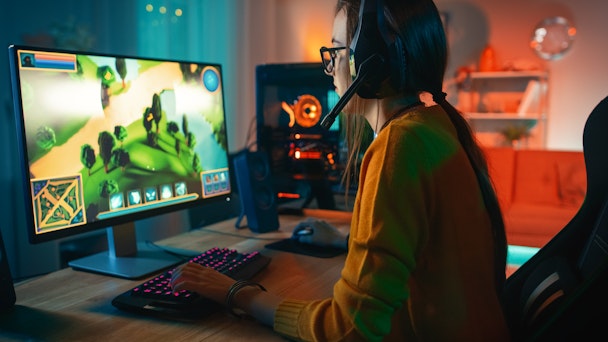‘We were n00bs when we entered social, but for gaming let’s be pros’
As part of our deep-dive into all things gaming, Marcos Angelides of Spark Foundry likens the allure of the flourishing space to the early days of social media. But can marketers avoid repeating the mistakes they made there?

While we’ve all been playing the battle royal called Covid, gaming has been collecting new players faster than Animal Crossing. Traditionalists may still think of it as the stunted sibling of entertainment, but it’s a goliath, generating eight-times more revenue than the music industry and three-times more than football, the world’s largest sport.
That mountain of money is then used to offer staggering incentives. The top four esports tournaments offer more prize money than the FA Cup, Six Nations, Wimbledon, British Open, The Masters and The Grand National combined.
Brands are obviously excited about the opportunity. But they’re also apprehensive of the unknowns. So, they’re caught in two minds. No one wants to be last to the party, but neither do they want to be the first one burned.
This dilemma should sound familiar. It was the same one faced 10 years ago as brands stepped into the emerging world of social media. Many mistakes were made in those early days of engagement, many campaigns we’d rather forget.
So, to help us avoid making the same mistakes all over again, perhaps we should remember what we learned from before.
Go where the gamers go
Back in the day, a branded Facebook page had it all. Interactive questionnaires, bespoke skins, personalized pokes (remember those?).
But we slowly learned an almost impossible truth. People don’t want to spend four hours engaging with a brand. They’d prefer to connect with their friends. WTF!!!
Brands had wasted mountains of money creating a digital playground no one wanted to visit. The same will be true of gaming.
Yes, you can launch hundreds of channels on Twitch, and yes, you can craft your own place on Roblox, but 99% of the time, people won’t give a shit! Instead of trying to force gamers to come to you, take your brand to where they already are.
Explore sponsorships, work with creators, design bespoke skins. Louis Vuitton did just this for League of Legends, creating virtual clothes for gamers, along with a physical trophy case for the esports tournament.
Start by learning about the community you want to reach and then find natural ways to augment the games people already play. But don’t expect the process to be free, which takes us to point two.
Organic will get nerfed
New channels seem to offer great organic reach – Facebook did, Instagram did, TikTok does (for now). Which is why the tantalizing attraction of ‘viral’ content is still alive and well (thanks Ocean Spray!).
But the reality is, it doesn’t last. Platforms will eventually quickly squeeze you for advertising spend. Partly because they need to protect the user experience. But also because they have to show double digit growth to get their bonuses.
Even when you do get a viral hit, the reach is much lower than you’d expect. As we’ve heard from digital leaders such as Jerry Daykin and Wes Finley, you can easily achieve the same levels of reach for a few thousand pounds.
And while you may feel you have the perfect ingredients for a viral hit, you have a statistically higher chance of getting hit by lightning. Twice. On a moving vehicle (don’t @ me, I’ve done the maths).
Sooner or later there will be an Oreo Blackout moment within the world of gaming. Do not let it distract you from a solid marketing plan.
Beware made up metrics
Engagement rates, reactions per post, activity scores, friends of fans, unlikes. God, there were a lot of new metrics. All of which supposedly showed the power of social and how it was definitely better than traditional marketing measures such as reach, uplift and the one we often forget... sales.
We quickly learnt that some of these metrics were interesting, but most were misleading. In fairness, the social media companies quickly saw sense too. Facebook cancelled many of its engagement metrics and YouTube started adopting TV terminology.
This wasn’t an admission of defeat; it was a stroke of genius. It helped marketers compare apples with apples, and ultimately allowed the big platforms to steal more money from other channels.
So just like social, beware the new metrics of gaming.
Yes, it will be interesting to see brand mentions per stream or donation rates per promo, but don’t let these distract from the bigger question – how is this campaign supporting your marketing strategy, and how can you prove it is contributing to sales?
TL;DR
Talking through these trends has been a cathartic experience. It seems the scars of those early social campaigns are still fresh. But I hope these trends were obvious. I hope you read this and go ‘pff, I knew all of that already’.
That’s not the usual response a writer would want. But if they are obvious and expected, it means we’ve all learned from our mistakes – and that we won’t repeat them.
We were n00bs when we entered the world of social media. This time, let’s be pros.
Marcos Angelides is the chief strategy and innovation officer at Spark Foundry, part of Publicis Play.
